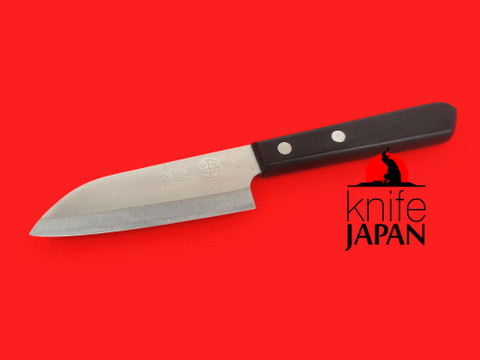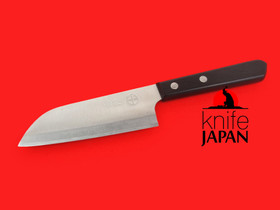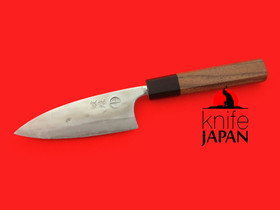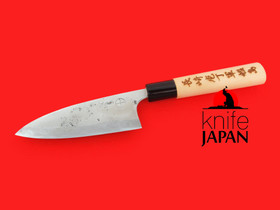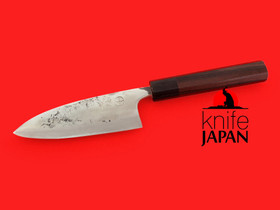Kuwahara Kaji Kobo・Nagasaki Gunkanjima Toku-sho Bunka-bocho 110mm・Stainless
Product Description
Long-lasting Japanese sharpness in an especially compact western-style kitchen knife. Cute, isn't it?
Don't be fooled. It's a serious little knife. A very good supplementary tool at the board and a great size for use at the table, we also think this is an excellent choice for elderly users - especially small ones - who are still preparing meals for themselves. It's light but doesn't require strength in the wrist to slice through carrots, chicken skins or calamari. If you have a child in the house who wants to help in the kitchen then this would be a great tool for them (you might wish to grind the tip down a fraction).
One thing we'd like to highlight is the tight fit and finish. It's not always the way with a hand-sharpened, hand-assembled knife in this style - in our time we've seen pins that were gappy, tangs that looked ill-matched, but not on these knives. It's easy to tell Kuwahara san has an eye for detail and presentation that respects the item and the customer who'll be using it. The laminated ply and resin handle is said to have bactericidal properties and the half-tang construction means it's there for the life of the knife.
Let's unravel the name: Nagasaki Gunkanjima Toku-sho Bunka-bocho. Quite majestic for a little knife.
'Bunka' is the Japanese word for culture and its use for knives dates back to the Meiji era in the late 19th century, when Japanese food culture began to embrace western proteins and western styles of food preparation. More meat in the everyday diet led to wider adoption of less specialized kitchen knives. 'Toku-sho' means 'special small'. Forgive the translation.
The Gunkanjima link is interesting. The township of Kayaki-cho in Nagasaki (you've heard of Nagasaki) has a long association with the nearby island of Hashima, commonly called Gunkanjima. Kayaki-cho and Gunkanjima shared the local stage in Japan's Meiji-era industrial development and knife makers in the area long utilized the high-grade coking coal extracted from Mitsubishi's undersea Hashima mine. It's an appropriate marketing association, hence 'Nagasaki Gunkanjima Toku-sho Bunka-bocho'.
There. Done. A long product description for a short knife, but well deserved.
| Blade steel: | Yasugihagane | stainless |
| Bevel: | Ryōba double bevel |
| Blade construction: | Sanmai |
| Left-handed available: | Handle and blade suit both hands |
| Handle: | Gohan (Pakkawood) |
| Ferrule: | Plastic |
| Blade length: | 110mm |
| Overall Length: | 220mm |
| Blade height: | 35mm |
| Blade spine: | 1.5mm |
| Handle length: | 110mm |
| Handle width: | Tapered 23~19x14mm |
| Weight in hand: | 74g |
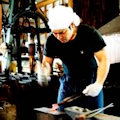
 Loading... Please wait...
Loading... Please wait...











